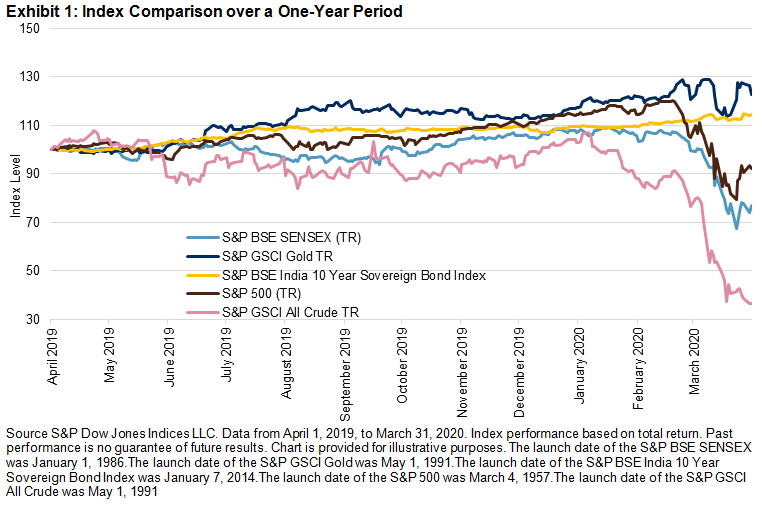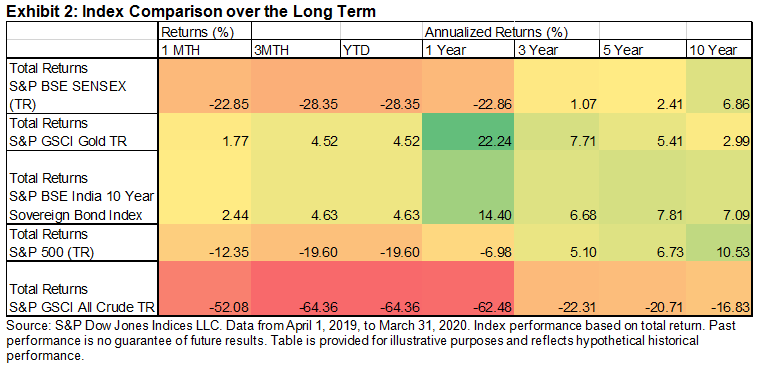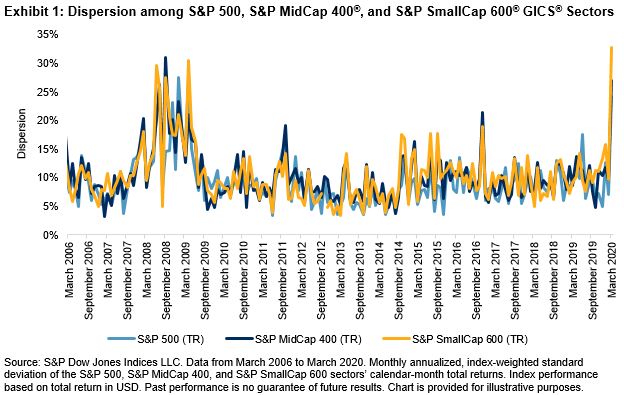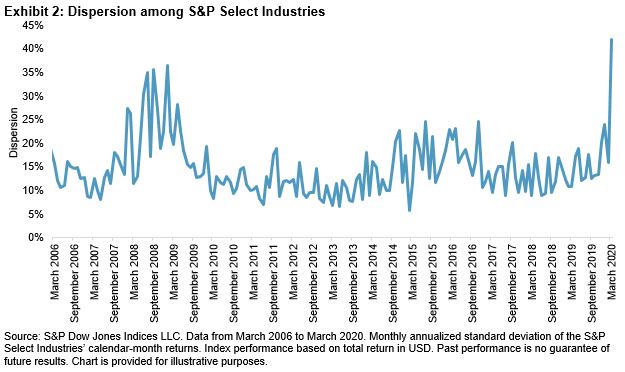While the COVID-19 pandemic wreaked havoc on global financial markets, it has affected Australian equity sectors quite unevenly. Energy, Financials, and Real Estate have experienced the heaviest losses, while Health Care has outperformed by a wide margin, sustaining a 10% YTD gain through April 9, 2020.

In our recent paper marking the 20th Anniversary of the S&P/ASX Index Series, we discussed how changes to the composition of the S&P/ASX 200 over the past two decades provide a window into the evolution of the Australian stock market. One key observation made was the outsized growth of the Health Care sector—which increased from a 1% weight in the S&P/ASX 200 in 2000 to just over 10% as of the end of 2019, becoming the third-largest sector in the index behind Financials and Materials.
Fast forward to today, just a few months later, Health Care has increased to nearly 15% of the S&P/ASX 200, approaching the size of the Materials sector. One of its constituents, CSL—the Australian biotech giant—has become the largest Australian company by market value for the first time.
Exhibit 2 illustrates the increasing importance of the Health Care sector in the S&P/ASX 200 over the past two decades, a trend that gained notable momentum over the past 10 years. In fact, since March 2011, the combined weight of Financials and Materials—Australia’s largest sectors—decreased from 59.4% to 45.3%, while Health Care jumped from 3.2% to 14.2%.

At the launch of the S&P/ASX 200 in 2000, the Health Care sector’s total market cap was just AUD 7 billion. As of April 9, 2020, it surpassed AUD 210 billion, representing a compound annual growth rate of about 18.5% over 20 years.

In a nod to the sector’s growing clout, CSL unseated Commonwealth Bank as the largest Australian company by market value in March, thus becoming the top holding in the S&P/ASX 200. Five years ago, CSL was the eighth-largest company, and it first joined the top 10 in 2012.

Because of its size (CSL represents about 70% of the S&P/ASX 200 Health Care sector by market cap) and impressive returns, the overall growth of the sector can largely be attributed to its success. However, other prominent companies in the sector such as Cochlear, Sonic Health Care, and ResMed have also experienced strong long-term total returns. Likewise, sector growth has been largely organic. Each of the top five companies currently in the S&P/ASX 200 Health Care were listed on the ASX in 2000, and the top three (CSL, Cochlear, and Sonic Health Care) were S&P/ASX 200 constituents at launch.
Exhibit 5 illustrates the significant outperformance generated by the S&P/ASX 200 Health Care relative to the S&P/ASX 200 and the other largest equity sectors over the past 20 years. This trend has accelerated since 2012.

While Health Care has come to the forefront during this devastating pandemic, the sector’s recent rise is an extension of a long-term trend that has been unfolding in the Australian equity market for many years.
The posts on this blog are opinions, not advice. Please read our Disclaimers.

























































